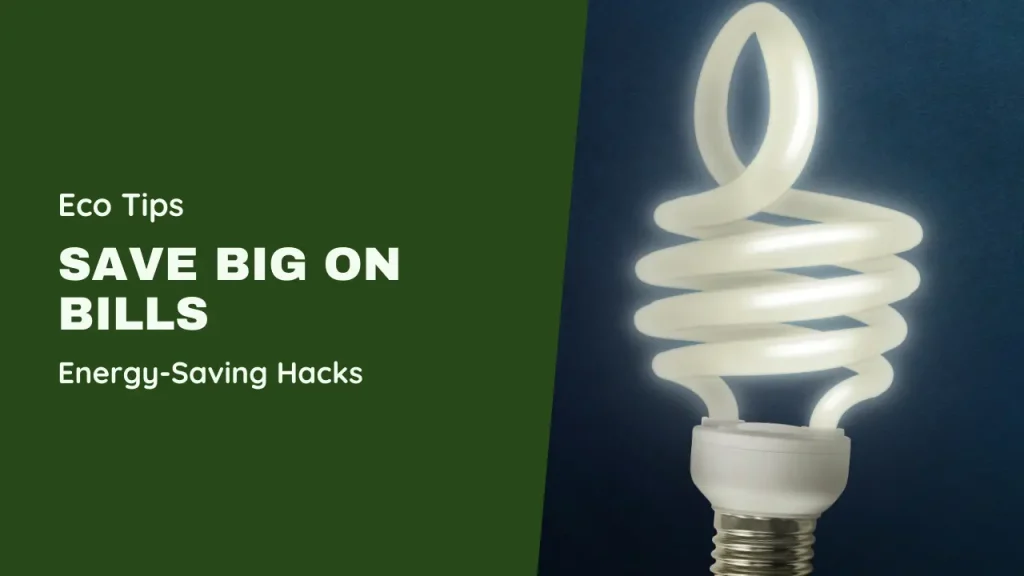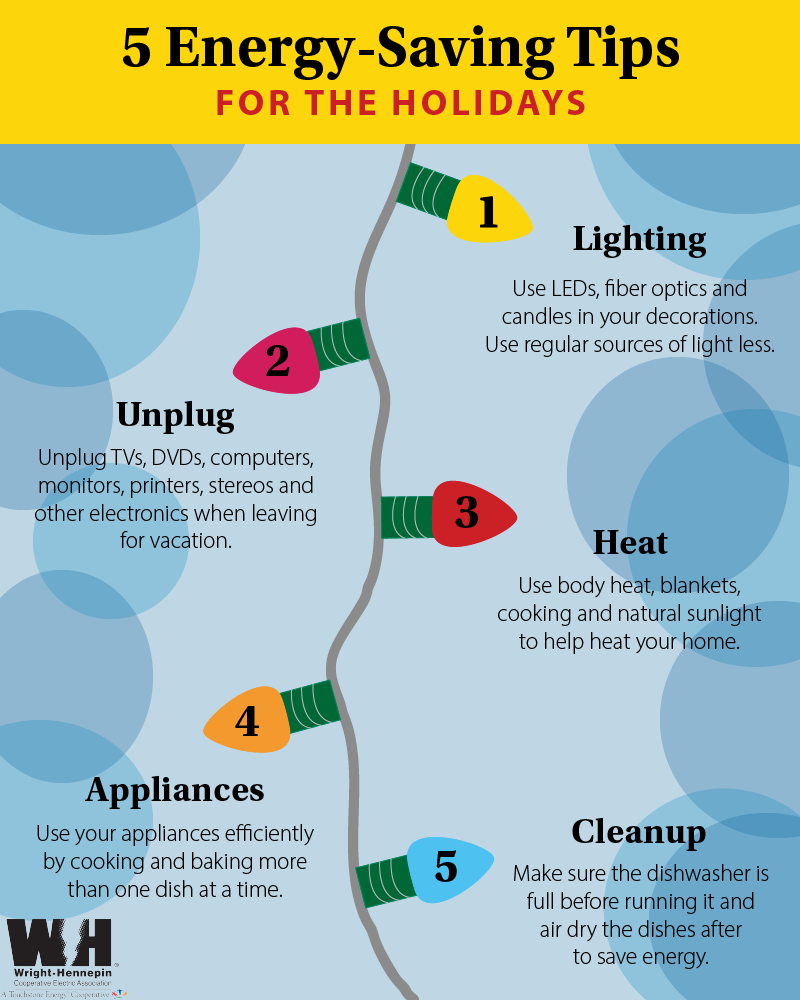Saving energy is important. It helps cut costs and protects the environment.
Do you ever wonder how you can save more energy at home? Small changes can make a big difference. Using less energy not only saves money but also helps the planet. Many simple habits and practices can reduce your energy use.
These tips are easy to follow and can fit into your daily routine. By making a few adjustments, you can create a more energy-efficient home. Let’s explore some practical and effective energy-saving tips.

Home Insulation
Proper home insulation is essential for maintaining a comfortable temperature inside your home. It helps you save energy and reduces heating and cooling costs. With the right insulation, you can keep your home warm in winter and cool in summer. Let’s explore the benefits and some DIY tips for effective insulation.
Benefits Of Proper Insulation
Investing in proper insulation offers multiple advantages:
- Energy Efficiency: Reduces the amount of energy required for heating and cooling.
- Cost Savings: Lower energy bills due to reduced usage of heating and cooling systems.
- Comfort: Maintains a consistent temperature throughout the home.
- Noise Reduction: Insulation can also minimize outside noise.
- Environmental Impact: Less energy consumption means a smaller carbon footprint.
Diy Insulation Tips
Here are some simple DIY insulation tips to improve your home’s energy efficiency:
- Seal Gaps and Cracks: Use caulk or weatherstripping to seal gaps around windows and doors.
- Add Insulation to the Attic: Lay fiberglass batts or blown-in insulation in your attic to prevent heat loss.
- Insulate Walls: Use foam insulation boards or spray foam to insulate wall cavities.
- Insulate Floors: Install underfloor insulation, especially in rooms above unheated spaces.
- Install Door Sweeps: Attach door sweeps to the bottom of exterior doors to block drafts.
By following these tips, you can significantly enhance your home’s insulation and enjoy a more energy-efficient living space.

Efficient Lighting
Efficient lighting is a key factor in reducing energy consumption. By making smart choices in lighting, you can lower your electricity bills and create a more eco-friendly home. Here are some practical tips to help you save energy through efficient lighting.
Switch To Led Bulbs
Switching to LED bulbs is one of the easiest ways to save energy. LED bulbs use up to 75% less energy than traditional incandescent bulbs. They also last longer, reducing the need for frequent replacements.
- Cost-effective: Although LED bulbs have a higher upfront cost, they save money in the long run due to their low energy consumption and long lifespan.
- Variety of options: LED bulbs come in various shapes, sizes, and colors. This makes them suitable for different lighting needs and preferences.
- Eco-friendly: LEDs do not contain harmful substances like mercury, making them safer for the environment.
Consider replacing your home’s most-used bulbs with LED alternatives. Start with high-traffic areas like the kitchen, living room, and bathrooms.
Maximize Natural Light
Maximizing natural light reduces the need for artificial lighting during the day. Here are some tips to make the most of natural light in your home:
- Use light-colored curtains: Light-colored curtains and blinds allow more sunlight to enter your rooms.
- Keep windows clean: Clean windows let in more light. Make it a habit to clean them regularly.
- Strategic furniture placement: Arrange furniture to avoid blocking windows. This ensures that light can flow freely into your living spaces.
- Mirrors and reflective surfaces: Place mirrors opposite windows to reflect light and brighten up the room.
By making these small changes, you can significantly reduce your reliance on artificial lighting during the day. This not only saves energy but also creates a more pleasant and inviting atmosphere in your home.
Smart Thermostats
Smart thermostats have become essential in homes aiming to save energy. These devices help manage heating and cooling efficiently. With smart thermostats, you can control your home’s temperature remotely. This technology ensures your home stays comfortable while reducing energy bills.
Advantages Of Smart Thermostats
Smart thermostats offer many benefits for energy-saving. Firstly, they learn your schedule and adjust temperatures accordingly. This feature ensures that energy is not wasted when no one is home. Secondly, they provide detailed energy usage reports. These reports help you understand and manage your energy consumption better.
Another advantage is remote control via smartphone apps. You can adjust your thermostat settings from anywhere. This flexibility allows you to save energy even when you are not at home. Lastly, smart thermostats often integrate with other smart home devices. This integration creates a seamless and efficient home environment.
Choosing The Right Model
Choosing the right smart thermostat depends on several factors. Compatibility with your HVAC system is crucial. Ensure the thermostat works with your existing heating and cooling system. Some models are only compatible with specific systems.
Next, consider the features you need. Some models offer basic scheduling and control. Others provide advanced features like learning algorithms and energy reports. Decide which features are most important for your needs. Price is another factor to consider. Smart thermostats come in various price ranges. Choose one that fits your budget while offering the necessary features.
Finally, read reviews and ratings from other users. These insights can help you make an informed decision. A good smart thermostat should be reliable and user-friendly.
Appliance Upgrades
Upgrading your appliances can lead to significant energy savings. Many old appliances use more energy than necessary. Newer models are designed to be more efficient. This can help reduce your energy bills. Let’s explore how appliance upgrades can benefit you.
Energy-efficient Appliances
Energy-efficient appliances consume less electricity. They are designed with advanced technology. This technology minimizes energy use while maintaining performance. Look for appliances with the Energy Star label. This label ensures the appliance meets energy efficiency standards. Investing in these appliances can lower your utility bills.
When To Replace Old Appliances
Old appliances may cost more to operate. If your appliance is over ten years old, consider replacing it. Newer models often have better energy ratings. They use less water and electricity. This can save you money in the long run.
Listen to your appliance. If it makes strange noises, it might be time to replace it. Frequent repairs are another sign. Instead of fixing an old appliance, invest in a new one. This choice can improve your home’s energy efficiency.
Water Heating
Water heating accounts for a large part of household energy use. Optimizing your water heating can save money and reduce energy consumption. Here are some practical tips to make your water heating more efficient.
Tankless Water Heaters
Consider installing a tankless water heater. Unlike traditional models, tankless heaters provide hot water on demand. This means they do not store hot water and only heat it when needed. This can lead to significant energy savings.
- Energy Efficiency: Tankless heaters can be up to 34% more efficient.
- Space Saving: They take up less space as there is no bulky tank.
- Longer Lifespan: They typically last longer than traditional water heaters.
Switching to a tankless water heater can help reduce your energy bills and save space in your home.
Insulating Your Water Heater
Insulating your water heater can also lead to energy savings. This is a simple and cost-effective way to improve efficiency.
- Purchase an Insulation Blanket: These are available at most hardware stores.
- Wrap the Heater: Follow the manufacturer’s instructions to wrap the heater.
- Secure the Blanket: Use tape or straps to secure the insulation.
Insulating your water heater can reduce heat loss by up to 45%. This can lead to a 7% to 16% savings on water heating costs.
Implementing these tips can help you save energy and reduce your utility bills. Start with these simple steps to make your water heating system more efficient.
Sealing Air Leaks
Sealing air leaks is an essential step in saving energy at home. It helps to keep your house warm in winter and cool in summer. This leads to lower energy bills and increased comfort. Let’s explore how to identify and seal these leaks effectively.
Identifying Air Leaks
Begin by checking common spots where air can escape. Windows and doors are the main culprits. Also, inspect electrical outlets and plumbing areas. Use a lit incense stick to detect leaks. Move the stick around edges of windows and doors. If the smoke wavers, you have found a leak. Another method is the paper test. Close a door or window on a piece of paper. If you can pull it out easily, there is a gap.
Effective Sealing Techniques
Once you have identified the leaks, it’s time to seal them. Weather stripping is ideal for doors and windows. Choose the right type for your needs. Foam tape is easy to apply and works well. For larger gaps, use caulk. Apply a continuous bead along the gap. Smooth it with a damp finger. Don’t forget to check and seal leaks around electrical outlets. Use foam gaskets behind outlet covers. Install draft stoppers at the bottom of doors. This blocks air from coming in. For attic leaks, use expanding foam insulation. It fills larger gaps effectively. Finally, maintain your seals regularly. Check them every few months. Replace or repair as needed.
Energy-efficient Windows
Energy-efficient windows play a crucial role in reducing your home’s energy consumption. These windows minimize heat loss during winter and keep your home cooler in summer. As a result, you save on heating and cooling costs. Below are some ways to enhance your windows’ energy efficiency.
Benefits Of Double-glazed Windows
Double-glazed windows consist of two glass panes with a space between them. This design provides better insulation than single-glazed windows. The space between the panes contains air or gas, which reduces heat transfer. This keeps your home warm in winter and cool in summer.
Double-glazed windows also help in reducing noise pollution. They create a quieter indoor environment by blocking external sounds. Additionally, they increase the security of your home. The two panes make it harder for intruders to break through.
Window Treatments For Energy Savings
Window treatments can further enhance energy savings. Thick curtains and blinds help insulate your home. They prevent heat from escaping during cold months. In summer, they block sunlight, keeping your home cooler.
Consider using reflective or blackout shades. These types of window treatments reflect sunlight, reducing heat gain. They are especially useful in sunny climates. Installing window films is another great option. They add an extra layer of insulation and block UV rays.
Renewable Energy Sources
Adopting renewable energy sources can significantly reduce your energy bills. They are eco-friendly and help in reducing our carbon footprint. Let’s explore two popular options: solar panels and wind turbines.
Solar Panels
Solar panels convert sunlight into electricity. They are easy to install on your roof. Once installed, they require minimal maintenance. This makes them an excellent long-term investment.
Benefits of solar panels:
- Reduces electricity bills: Generates power from the sun.
- Eco-friendly: No harmful emissions.
- Low maintenance: Simple to clean and maintain.
- Increases property value: Homes with solar panels are more attractive.
Consider the following when installing solar panels:
- Check the roof condition.
- Assess the sunlight exposure.
- Calculate your energy needs.
- Consult with a professional installer.
Wind Turbines
Wind turbines harness wind energy to generate electricity. They are suitable for areas with consistent wind flow. Wind turbines can be installed on properties with ample space.
Advantages of wind turbines:
- Cost-effective: Low operational costs.
- Renewable energy: Sustainable and inexhaustible.
- Reduces reliance on fossil fuels: Cleaner environment.
- Scalable: Suitable for small and large installations.
Points to consider before installing wind turbines:
- Evaluate wind speed in your area.
- Check local zoning regulations.
- Determine the height and size of the turbine.
- Consider the impact on the local environment.
Frequently Asked Questions
How Can I Reduce My Energy Bills?
You can reduce your energy bills by using energy-efficient appliances, unplugging devices when not in use, and utilizing natural light.
What Are The Best Energy-saving Tips For Home?
Use programmable thermostats, switch to LED bulbs, and properly insulate your home to save energy effectively.
Do Energy-saving Devices Really Work?
Yes, energy-saving devices like smart thermostats and energy-efficient appliances help lower energy consumption and reduce bills.
How Can I Save Energy In The Kitchen?
Use energy-efficient appliances, cook with lids on pots, and avoid overusing the oven to save energy in the kitchen.
Conclusion
Saving energy benefits your wallet and the environment. Small changes make a big difference. Turn off lights when not in use. Unplug devices to cut down power. Use energy-efficient appliances to save more. Insulate your home to keep it warm or cool.
These tips help reduce energy consumption. Start today and see the positive impact. You’ll save money and contribute to a greener planet. Every effort counts. So, take these steps and enjoy a more sustainable lifestyle.

